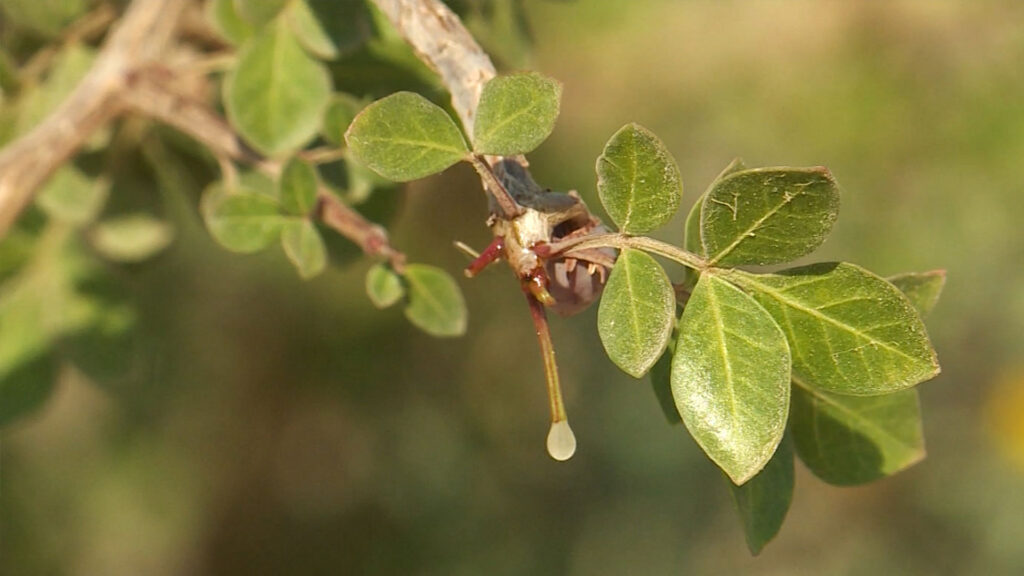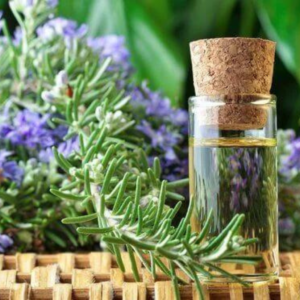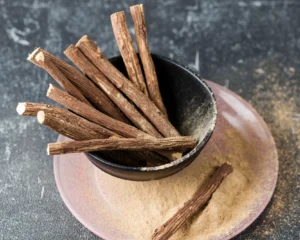Balm of Gilead

Balm of Gilead is derived from the resinous buds of the Populus species, particularly Populus candicans or Populus balsamifera. This aromatic substance has been valued for its healing properties for centuries, often referenced in ancient texts for its soothing and medicinal effects. The balm is extracted from the buds in spring when they are rich in a sticky, fragrant resin. Traditionally, it has been used in salves, ointments, and perfumes for its soothing and anti-inflammatory properties.
1. Size:
- Balm of Gilead trees, from which the buds are harvested, can grow up to 30 to 50 feet (9 to 15 meters) tall. The buds themselves are small, typically about 1 inch (2.5 cm) long.
2. Color:
- The buds are a rich, reddish-brown color, while the resin they produce is golden to amber. The bark of the tree is grayish-brown, and the leaves are a dark green on the upper surface, with a paler underside.
3. Texture:
- The buds are sticky to the touch due to the resin they contain. The texture of the resin is thick and viscous, making it ideal for creating ointments and salves.
4. Fragrance:
- Balm of Gilead is highly aromatic, with a sweet, balsamic scent that is both soothing and invigorating. The fragrance is often compared to that of fresh pine or eucalyptus, with undertones of vanilla.
5. Uses:
- Balm of Gilead is widely used for its anti-inflammatory and analgesic properties. It is commonly applied topically to soothe sore muscles, treat minor wounds, and reduce inflammation.
- The balm is a popular ingredient in salves and creams designed to heal dry, cracked skin and minor irritations. It helps to moisturize and protect the skin from further damage.
- The resin’s soothing fragrance makes it a favorite in aromatherapy, where it is used to relieve stress and promote relaxation.
- Historically, Balm of Gilead has been used to treat respiratory conditions such as colds, coughs, and bronchitis. It is often included in herbal steam treatments and chest rubs.
6. Habitat:
- Balm of Gilead trees thrive in cool, temperate climates and are commonly found in North America, particularly in Canada and the northern United States. They prefer moist, well-drained soils and are often found along riverbanks, in wetlands, and in other areas with abundant water.
7. Cultural and Spiritual Significance:
- Balm of Gilead has long been regarded as a symbol of healing and relief. Its mention in the Bible as a remedy for various ailments has made it a metaphor for spiritual healing and comfort.
- In various indigenous cultures, Balm of Gilead was used in healing rituals and as a protective charm. It was believed to ward off negative energy and bring peace and comfort to those who used it.
Spiritual Properties
- Healing and Comfort: Balm of Gilead is often associated with healing both physical and emotional wounds. It is used in spiritual practices to bring comfort, ease pain, and promote inner peace.
- Protection: The resin is also believed to provide spiritual protection, creating a shield against negative influences and promoting a sense of security.
Medicinal Properties
- Anti-inflammatory: Balm of Gilead is known for its potent anti-inflammatory effects, making it useful in treating conditions such as arthritis, muscle pain, and skin inflammations.
- Analgesic: The resin acts as a natural pain reliever, soothing aches and pains when applied topically. It is often used in balms and ointments for this purpose.
- Respiratory Support: Balm of Gilead has been traditionally used to treat respiratory conditions. Its expectorant properties help clear mucus from the lungs, making it easier to breathe during colds or bronchitis.
- Skin Healing: The balm’s emollient properties make it effective in treating dry, cracked skin and minor wounds. It helps to speed up the healing process and prevent infections.
Allergic Reactions
Balm of Gilead is generally safe for topical use, but some individuals may experience allergic reactions.
- Skin Sensitivity: Prolonged or excessive use may cause skin sensitivity or allergic reactions, such as redness, itching, or rash, especially in individuals with sensitive skin.
- Respiratory Irritation: Inhaling the resin’s fumes or applying it near the face may cause respiratory irritation in sensitive individuals, potentially leading to coughing or shortness of breath.
- Photosensitivity: Similar to other resins, Balm of Gilead may increase sensitivity to sunlight, particularly when applied to the skin. This can result in sunburn or skin irritation, so it is advisable to avoid direct sun exposure after application.
- Potential for Allergic Contact Dermatitis: Regular use of Balm of Gilead may lead to allergic contact dermatitis in some individuals, characterized by an itchy rash or blisters on the skin. If this occurs, it is recommended to discontinue use immediately.
- Skin Irritation: Even when used as directed, some people may experience mild skin irritation, especially if they have sensitive skin. Redness or itching may occur but usually subsides quickly.
- Drowsiness: In rare cases, the soothing properties of Balm of Gilead may cause mild drowsiness, particularly when used in aromatherapy or in large quantities.

Raspberry Leaf
Raspberry Leaf Raspberry Leaf is a versatile herb that comes from the red raspberry plant. It has been used for centuries in traditional medicine for

Rosemary for Cognitive Health: A Natural Boost?
Rosemary for Cognitive Health: A Natural Boost? Rosemary has long been cherished for its medicinal properties, especially for its potential cognitive-enhancing abilities. Traditionally, rosemary has

Licorice Root
Licorice Root Licorice Root is a perennial herb renowned for its sweet flavor and numerous health benefits. It has been used in traditional medicine for

True Unicorn Root
True Unicorn Root The overall appearance of hibiscus flowers is bold and exotic, making them a popular choice for gardens, decorations, and floral arrangements. Their

Valerian Root
Valerian Root Valerian Root, derived from the Valeriana officinalis plant, is a well-known herb used for its calming and sedative properties. It is commonly utilized

Chamomile Flowers
Chamomile Flowers Chamomile Flowers are small, daisy-like blossoms known for their soothing and calming properties. These flowers have been used for centuries in herbal medicine,